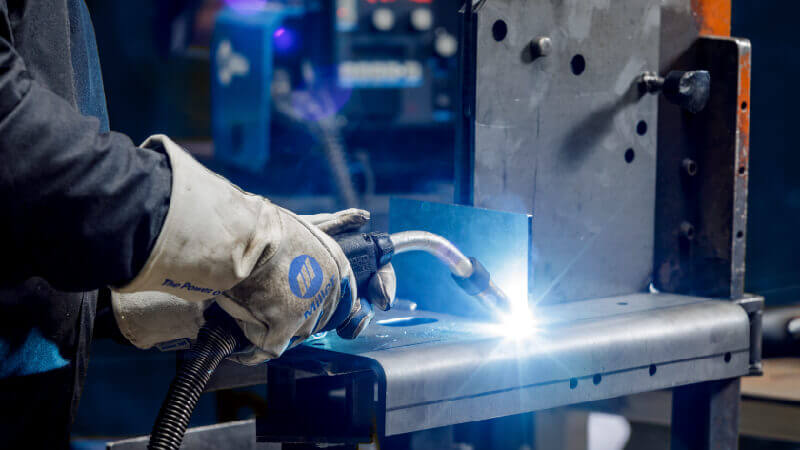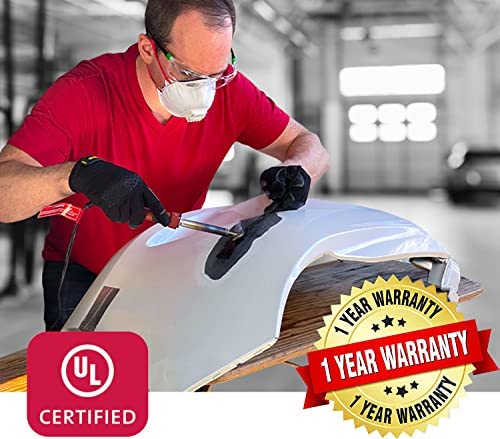Ways to identify and resolve weld flaws in Montana Mobile Welding and Repair Belgrade Welding
Everything about Welding: Key Insights Into Techniques and Best Practices for Success
Welding incorporates a range of methods, each matched for particular products and applications. Comprehending these approaches, such as GMAW, SMAW, and TIG, is crucial for attaining excellent outcomes. The right devices and safety practices can not be ignored. As prep work and troubleshooting play vital duties in the welding procedure, grasping these aspects can greatly enhance the top quality of the end product. What are the crucial aspects that guarantee a successful weld?
Recognizing Various Welding Methods
Welding strategies incorporate a range of techniques, each fit to specific applications and materials. Amongst one of the most common strategies are Gas Steel Arc Welding (GMAW), Protected Metal Arc Welding (SMAW), and Tungsten Inert Gas Welding (TIG) GMAW, additionally called MIG welding, is preferred for its rate and flexibility, making it optimal for thin products. SMAW, or stick welding, is favored for its simpleness and effectiveness in outside atmospheres, specifically with thicker steels. TIG welding uses precision and control, making it suitable for detailed job and non-ferrous metals (Welding). Each technique has its distinct advantages and considerations, enabling welders to choose the most effective method based on the project's needs, material kind, and preferred end results. Understanding these methods is necessary for effective welding
Important Welding Equipment and Devices
While various welding strategies need details skills, the right equipment and tools are equally essential for attaining quality results. Necessary welding devices includes welding devices, which differ relying on the strategy-- such as MIG, TIG, or stick welding. Protective gear, including helmets, gloves, and aprons, assurances safety and comfort during the procedure. Furthermore, components and clamps aid safeguard materials in location, guaranteeing accuracy in welds. Consumables like welding poles, wire, and shielding gas are also important parts that influence the top quality of the weld. Devices such as grinders and cutters facilitate surface area prep work and post-weld completing, adding to a specialist result. Investing in high-grade devices inevitably improves the performance and performance of welding tasks.
Safety Practices in Welding
Proper safety methods are necessary in the welding market to safeguard employees from prospective hazards. Welders need to wear proper personal safety devices (PPE), consisting of headgears with appropriate shading, gloves, and flame-resistant apparel. Appropriate ventilation is important to reduce direct exposure to hazardous fumes and gases generated during the welding procedure. Additionally, employees must be learnt the right handling of welding equipment to stop accidents. Fire security procedures, such as maintaining combustible materials away from the welding location and having fire extinguishers easily offered, are essential. Routine assessments of tools and work areas can help determine potential threats prior to they bring about accidents. By adhering to these safety and security practices, welders can create a safer working environment and decrease risks linked with their profession.
Preparing Products for Welding
Preparing materials for welding is an essential action that substantially influences the high quality and stability of the end product (Belgrade Welding). Correct prep work entails cleansing the surface areas to eliminate pollutants such as oil, rust, and dust, which can jeopardize the weld. Methods such as grinding, sanding, or utilizing solvents are typically used to accomplish a clean surface. Furthermore, ensuring that the materials mesh snugly is necessary; spaces can cause weak welds. It's also important to think about the placement and positioning of the elements, as this will impact the simplicity of welding and the final end result. Lastly, choosing the suitable filler material and ensuring compatibility with the base steels is important for achieving strong, sturdy welds
Tips for Achieving High-Quality Welds
Achieving top quality welds calls for focus to information and adherence to ideal methods throughout the welding process. Appropriate joint preparation is vital, making sure surface areas are tidy and cost-free from contaminants. Selecting the appropriate filler product and welding method based on the base metals is vital for perfect bonding. Preserving regular travel speed and angle while welding can advertise and prevent issues harmony. Additionally, controlling heat input is crucial; excessive warmth can lead to warping and damaged joints. If needed, frequently examining the welds during the procedure allows for prompt changes. Using suitable post-weld treatments, such as cleaning and stress and anxiety relief, can boost the sturdiness and integrity of the weld, eventually guaranteeing a successful outcome.
Troubleshooting Usual Welding Issues
Welding usually presents obstacles that can impact the quality and integrity of the end product. Usual concerns such as porosity, irregular weld grains, and overheating can arise, each calling for certain repairing methods. Recognizing these troubles is important for welders to boost their abilities and achieve suitable results.
Porosity Issues Described
Although porosity can usually be overlooked, it stays an important concern in welding that can compromise the honesty of a completed item. Porosity describes the presence of tiny gas pockets within the weld grain, which can lead and damage the joint to early failure. This issue typically develops from impurities, dampness, or improper protecting gas coverage during the welding procedure. To alleviate porosity, welders should verify that the base materials are completely dry and clean, use proper protecting gases, and preserve regular welding parameters. Routinely examining the devices and environment can also aid identify potential concerns before they show up in the weld. Attending to porosity effectively is essential for attaining solid, durable welds that fulfill quality requirements.

Inconsistent Weld Beans
Irregular weld grains can significantly influence the quality and toughness of a finished product. Various elements add to this issue, consisting of incorrect traveling speed, wrong amperage settings, and inconsistent electrode angles. When the welder moves as well quickly, a bead may show up slim and do not have infiltration, while relocating also slowly can create excessive accumulation. In addition, using the incorrect amperage can cause either undercutting or too much spatter, both of which concession weld honesty. The welder's strategy, such as inconsistent torch motion, can likewise result in unequal grain look. To minimize these issues, welders ought to focus on keeping steady, controlled motions and ensuring appropriate devices settings to accomplish uniformity in their welds. Uniformity is crucial to accomplishing trusted blog here and solid welds.
Getting Too Hot and Bending Issues
Too much warm throughout the welding process can cause significant getting too hot and contorting issues, affecting the structural stability of the work surface. These problems frequently manifest as distortion, which can compromise positioning and fit-up, making further setting dual shield welding up testing. Elements adding to overheating include the choice of welding specifications, such as voltage and travel rate, along with the kind of product being bonded. To minimize these issues, welders must maintain regular travel rate and proper warm input while keeping an eye on the workpiece temperature. Furthermore, pre-heating or post-weld warm treatment can aid relieve tensions brought on by quick cooling - Belgrade Welding. Normal inspection and adherence to ideal methods are necessary in avoiding overheating and guaranteeing the durability and integrity of welded structures
Regularly Asked Inquiries
What Are the Occupation Opportunities in the Welding Industry?
The welding industry uses diverse occupation opportunities, consisting of positions as welders, engineers, educators, and examiners. Experts can operate in manufacturing, building and construction, aerospace, and auto industries, gaining from solid demand and affordable wages in different functions.
How Can I Enhance My Welding Speed Without Giving Up Top Quality?
To enhance welding speed without sacrificing quality, one must exercise efficient strategies, preserve devices, enhance setups, and boost hand-eye coordination. Regular training and seeking feedback can additionally greatly add to achieving much faster, premium welds.
What Accreditations Are Offered for Welders?
Many certifications exist for welders, including those from the American Welding Culture (AWS), the National Facility for Building And Construction Education And Learning and Study (NCCER), and various industry-specific organizations. These qualifications boost employability and demonstrate ability proficiency.
How Does Welding Affect the Features of Metals?
Welding affects the properties of metals by altering their microstructure, which can lead to changes in stamina, solidity, and ductility. Warm input and air conditioning prices during the procedure significantly affect these product characteristics.
Can I Weld Dissimilar Metals With Each Other?
